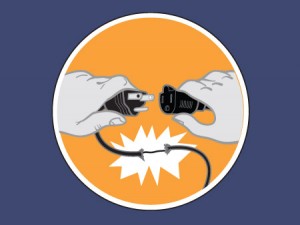The human body is susceptible to electric shock because it can conduct electricity. When the body receives an electric shock, the electric current passes freely through the skin and many major tissues and organs without any hindrance.
In extreme cases, an electric shock may even stop the heart by disturbing its rhythm and causing a cardiac arrest. The severity of an electric shock depends on the level of the voltage, the type of current, the duration of the shock, how the electric current passes through the person’s body, how quickly treatment is carried out and the person’s health in general.

Depending on the severity and duration of the shock, effects include:
- Superficial burns
- Internal tissue burns
- Disturbance or damage to the heart causing it to beat unsteadily and stop in extreme cases
Causes
- Damaged cords and extension wires
- Faulty appliances
- Electrical appliances having contact with water
- Incorrect wiring
- Lightning strike
Symptoms
- Burns
- Seizures
- Breathing difficulties
- Erratic heart beat
- Heart rhythm problems such as arrhythmias
- A weak pulse or no pulse at all
- Tingling sensation or numbness
- Muscle pain
- Cardiac arrest
- Unconsciousness
Treatment
In an electric shock situation, it is crucial that you call for medical assistance immediately. While waiting for help, follow these steps:
- Safety first! Do not touch the person if you suspect he is undergoing an electric shock. Always observe the situation before taking action. Touching a person who is affected by an electric current can allow the electric current to pass through his body to yours. This can leave you both helpless and injured.
- Instead of trying to draw back the person; switch off the electric supply, if practical. If you cannot switch off the supply, use a non-conductive material such as a plastic, wooden or cardboard object to disconnect the electric supply to the person.
- The sudden jolt of the electric current may allow the person to fall back and get injured due to trauma. If the person is unconscious or not breathing, begin CPR immediately.
- Prevent shock by laying the person down on the ground so that his head is slightly above his trunk. Elevate the legs to encourage blood circulation.
After preventing shock, ensure that immediate medical care is sought as the person may be affected internally with burns in his tissues and organs or other symptoms of electric shock.
Caution
- Make sure you do NOT touch a person undergoing an electric shock.
- Do NOT go near high voltage supplies until the power is switched off completely.
- Do NOT move the casualty unless urgently needed.
Safety precautions
- Always remember that your body can conduct electricity, therefore, never touch a bare or damaged wire or high voltage supplies.
- Be careful while dealing with electrical equipment in wet areas.
- Always hire an electrician to manage any wiring work in the house.
- Do not touch a person who is still in contact with an electric supply.
- Always switch off the electric supply before helping a casualty undergoing an electric shock.
Learn More About Treating Burns
To learn more about different types of burns, recognition and victim aid take a workplace approved training course with a provider near you. This subject is covered in childcare, emergency and standard first aid. To find a provider near you visit our locations page. Providers are located throughout Canada including in Vancouver, Calgary, Edmonton, Red Deer, Winnipeg, Regina, Ottawa, Toronto, Windsor and Halifax.
Related Training Video
http://www.youtube.com/watch?v=eDiAazckYbg
